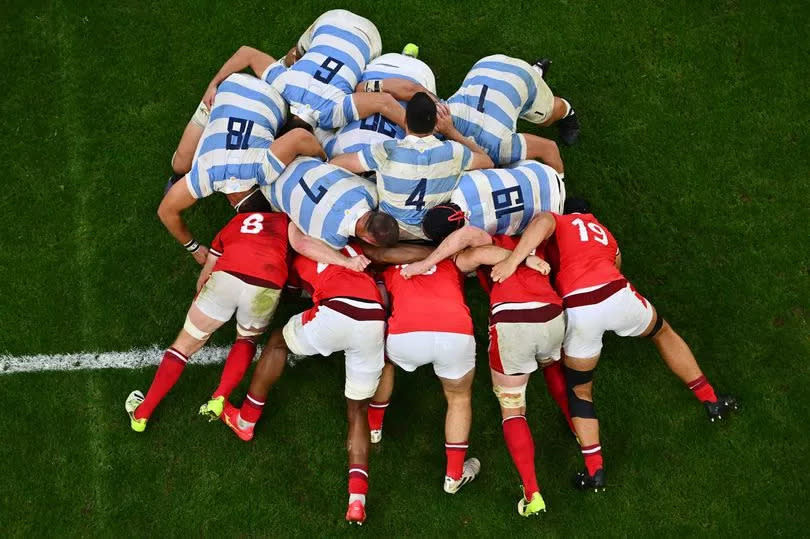The art and science of being a tighthead

Countless things in rugby just exist without widespread comprehension.
Facets of the game - both on and off the pitch - live in a state of just being, comprehended at a base level without the finer details necessarily being understood, scrutinised and analysed to the extent of the more obvious parts.
The scrum - and what occurs in that area of the game - is probably the best example of that. This isn’t to say that there aren’t people who don’t appreciate and understand what happens when the scrum-half feeds in, but it’s fair to say that the goings-on up front is a mystery to many.
"You may know 95 per cent of everything there is to know about scrums, but you'll never know the five per cent you need to know as you've not been in there,” once said former Wales hooker Mefin Davies to a coach who hadn’t experienced the coalface first-hand.
Art and science. All they are is our means to try and comprehend the things that elude us. And the secrets of the front-row, and the position of tighthead prop in particular, are both an art and a science. It’s a complex series of events and decisions, angles and interpretations, that can massively change the complexion of a match.
SIGN UP: Get the new exclusive Inside Welsh rugby newsletter for full insight into what's really going on around all the big issues. This special offer will get you full access for the entire year for just £10 instead of £40.
And yet, it’s often viewed in the most basic of terms. Just this week, Harlequins tighthead Will Collier called on more to be done to inform the general public of what truly goes on.
It’s a sentiment his coach, former Wales tight-head Adam Jones, agrees with, saying: "It is frustrating. But I guess if you're not in the position, you won't know the details. There's a lot of stuff about the scrum taking ages and if it's worth it, but it's what separates rugby from other sports. It's a massive momentum shift.
"Psychologically it's huge. We, as rugby players and coaches, have to embrace it more. Often you get commentators not understand it and bag it, saying a massive team will always dominate.
"It's pathetic. Interview the scrum coach on the touchline, show stats, come into the training environment and measure how much teams can push. People like me wouldn't have had a job if it was just like rugby league, with everyone basically the same size.
"We've got to make people understand. It's not just 16 men pushing against each other. It's always on a knife-edge. One wrong angle can change everything."
What makes this discourse around tightheads and the scrum all the more interesting, and relevant, is Wales’ own relationship with the position and facet of the game.
The World Cup in France was a relative up-turn in fortunes at scrum-time, but this Six Nations was something of a step backwards. Five different tightheads were used throughout the tournament, as the scrum generally struggled.
In terms of helping the perception that Wales have had a hard time developing props to don the three jersey since Jones retired from the Test scene in 2015, it didn’t do a great deal.
The question remains how Wales best develop tighthead props for the future, at the same time the sport itself seemingly wants to shine a brighter spotlight on the position.
In the latest Inside Welsh Rugby newsletter, we look closer at the art and science of being a tighthead prop, delving into the intricacies of the position and why it's perhaps not been a strength of Welsh rugby in recent years.
You can read it here and sign up for a free trial, or take advantage of our special launch offer, which costs just £10 for the entire year. It helps support our journalism and continue to investigate the stories that matter.
There'll be weekly in-depth analysis, as well as a greater insight into the game in this country and exclusive news too. Crucially, there's also an opportunity for you to have your say as part of our subscriber community in terms of what we cover.
And, last of all, there are no adverts on this newsletter.

 Yahoo News
Yahoo News 
